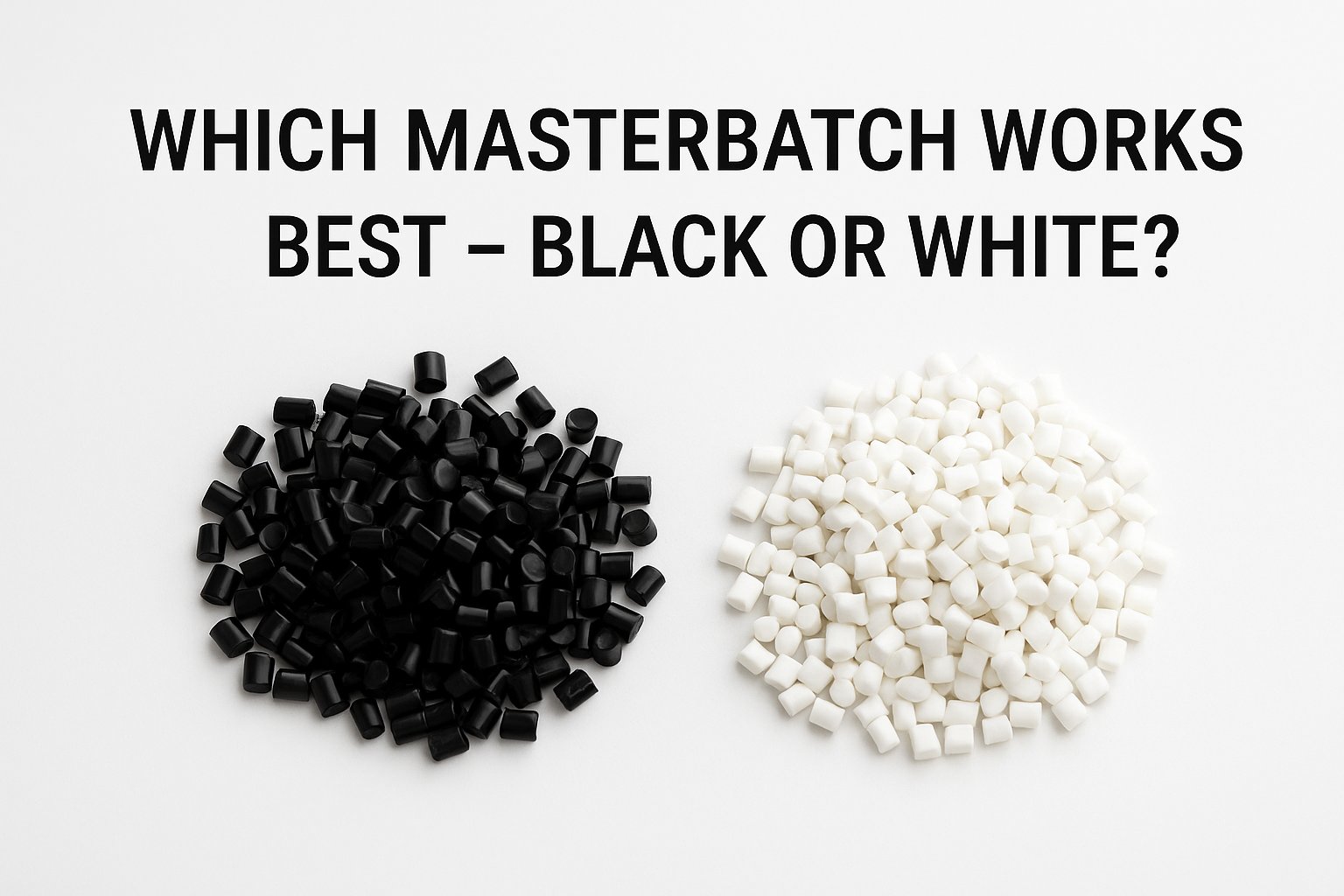Which Masterbatch Works Best Black or White
Which Masterbatch Works Best – Black or White?
In plastic processing, one of the most important choices manufacturers must make is selecting the right masterbatch. These colorant concentrates are used to impart color and enhance the properties of plastic products. Among the wide range available, black and white masterbatches stand out as the most widely used. However, understanding their differences and applications is crucial before making a selection. So, which masterbatch works best – black or white? The answer depends on a range of factors including your industry, product use, and desired properties.
What is a Masterbatch?
A masterbatch is a solid additive for plastics, typically in granular form, that contains concentrated pigments or performance-enhancing additives. It is mixed with the base polymer during processing to achieve specific characteristics, such as color, UV resistance, thermal stability, or improved strength.
Masterbatches help in reducing production costs, achieving consistent color, and enhancing the performance of final products. While color masterbatches simply modify appearance, additive masterbatches improve functionality. Black and white masterbatches serve both these roles in many applications.
To truly understand which masterbatch works best – black or white, let’s compare their composition, properties, and industrial use cases.
Composition and Characteristics
Black Masterbatch
Black masterbatch is primarily made from carbon black, a fine black powder with strong tinting strength. Carbon black not only provides deep coloration but also adds UV resistance and increases the lifespan of plastic products exposed to sunlight.
Carbon black is usually blended with carrier resins like polyethylene (PE) or polypropylene (PP), which help in easy dispersion during manufacturing. It may also include additives to improve heat resistance and processing behavior.
White Masterbatch
White masterbatch, on the other hand, uses titanium dioxide (TiO₂) as the primary pigment. TiO₂ is prized for its high brightness, opacity, and UV-reflective properties. It ensures a clean, pure white appearance and can also provide some level of UV protection.
Like black masterbatch, white variants also use carrier resins for compatibility with various plastic types. High-quality white masterbatches are especially important in products that require consistent color and regulatory compliance.
Industrial Applications
One of the easiest ways to decide which masterbatch works best – black or white is by examining where they are used:
Black Masterbatch Uses:
-
Automotive parts: UV resistance and strength for interior and exterior parts.
-
Agricultural films: Withstand harsh sunlight and increase durability.
-
Pipes and cables: Provide insulation, reduce degradation from light and heat.
-
Consumer goods: Enhanced aesthetics and protective qualities.
White Masterbatch Uses:
-
Food packaging: Bright, safe, and compliant with food-contact regulations.
-
Textiles and fibers: Uniform color and light reflectivity.
-
Medical products: Sterility, whiteness, and safety for use in sensitive environments.
-
Household products: Clean appearance and long-term color stability.
From this breakdown, it’s clear that your application will heavily influence the answer to which masterbatch works best – black or white? Each type has unique advantages tailored to specific functions.
Performance Comparison
UV Resistance
Carbon black in black masterbatch provides exceptional UV absorption, making it ideal for outdoor products. White masterbatch, with titanium dioxide, reflects UV rays to some extent, but doesn’t offer the same level of protection.
Opacity & Brightness
White masterbatch wins when it comes to brightness and opacity. TiO₂ creates high reflectivity, ensuring excellent coverage and a premium look. Black masterbatch, while deep in color, uses less pigment to achieve full opacity.
Thermal & Chemical Stability
Both masterbatches are formulated for high thermal stability. However, black masterbatches can typically withstand slightly higher temperatures, especially in high-performance applications like automotive or heavy industry.
Dispersion & Processing
Proper dispersion ensures even color and avoids defects in the final product. High-quality masterbatches, whether black or white, are designed for excellent processability, but white masterbatches often require better dispersion to avoid streaks or yellowing.
Cost Considerations
Cost is another vital factor in choosing the right masterbatch. Carbon black is generally less expensive than titanium dioxide, making black masterbatch more affordable. However, performance, purity, and regulatory requirements can offset these savings.
For example, food-grade white masterbatch with high TiO₂ content can be significantly more expensive. But if your product requires high brightness or compliance with food safety laws, the investment may be necessary.
So again, which masterbatch works best – black or white? If you're cost-focused and need durability, black may be the way to go. If your product requires high aesthetic value and regulatory clearance, white is often the better option.
Environmental and Regulatory Impact
Environmental and safety factors are becoming increasingly important in masterbatch selection. Carbon black is considered a potential health hazard when inhaled as dust, but it's generally safe once encapsulated in plastic. White masterbatch, using food-grade TiO₂, is more often preferred in packaging and healthcare due to its safer profile.
Both black and white masterbatches are recyclable and used in sustainable manufacturing practices, but the pigment production itself still poses environmental challenges.
Final Verdict
So, which masterbatch works best – black or white? There is no universal answer. It entirely depends on your specific needs:
-
For durability, UV protection, and lower cost: Black masterbatch is the right choice.
-
For brightness, purity, food safety, and visual appeal: White masterbatch is ideal.
Always consider your product's application, environment, regulatory needs, and budget before making a decision. Consulting with your masterbatch supplier can also help you customize the formulation to meet exact requirements.


